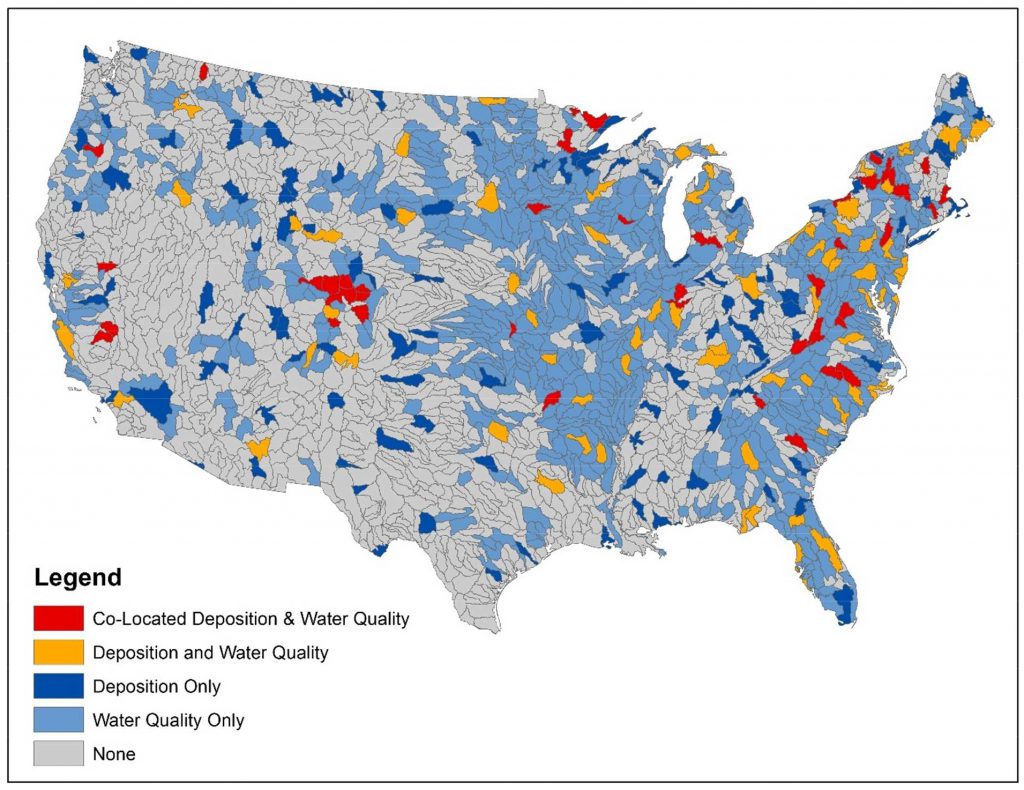
A new study explores the scientific need to better integrate water quality nutrient monitoring with measures of atmospheric deposition of nutrients (nitrogen and phosphorus). The recently published research examined the relationship between air and water nutrient contamination and determined major information gaps in environmental monitoring. The researchers identified several ecosystem types where better integration of nutrient data are needed, namely coastal zones, urban areas, agricultural landscapes, and undeveloped lands.
Coastal resource managers require accurate data on nutrient fluxes and sources in order to manage key issues such as eutrophication, harmful algal blooms, and hypoxia. Monitoring that connects deposition and water quality enables better ecosystem management, evaluation of pollution reduction efforts, and detection and response to unanticipated environmental changes. Investment now in key activities that couple air and water monitoring is not just relevant for nutrients, but has co-benefits for sulfur, mercury, and other pollutants.
USEPA and USDA led the project. NCCOS scientist Dave Whitall’s inclusion in the expert panel that conducted and published the research highlights NCCOS’s continued leadership role within the nutrient science community. Other collaborators included scientists from USGS, the National Atmospheric Deposition Program, the Consortium of Universities for the Advancement of Hydrologic Science, and Boston University.
For more information, contact Dave.Whitall@noaa.gov.
